Masters tournament founder Bobby Jones was once credited with saying: “You may as well praise a man for not robbing a bank” after he was lauded for calling a penalty on himself. Problem is, nowadays, competitors aren’t always sure whether they’ve committed an infraction.
The changes to the Rules of Golf — rewritten to help simplify them in 2019 with another new version introduced at the start of 2023 — have left some golfers confused, frustrated and sometimes unwittingly the recipient of an extra stroke or two on the scorecard.
The Masters has had its share of controversy regarding the regulations that govern the sport. Here’s a look at some of the more memorable/questionable rulings in Masters history.
Padraig Harrington, 15th hole, second round, 2009
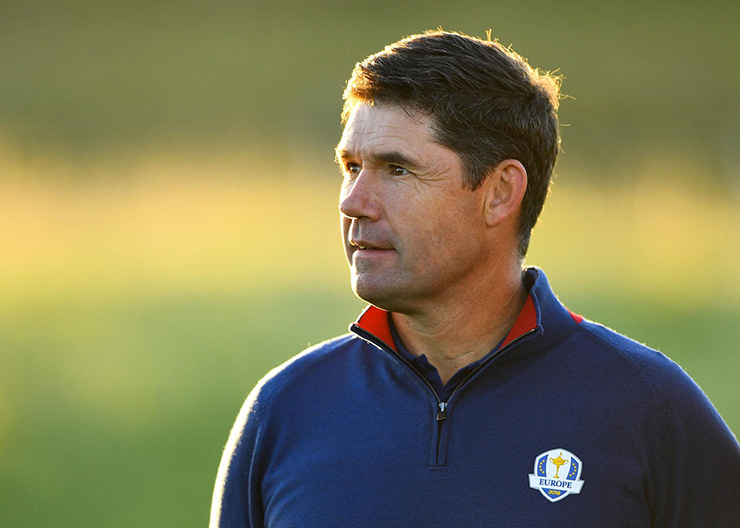
Ramsey Cardy
After an opening-round 69, Harrington, the reigning Open Championship and PGA champion in search of his third consecutive major, told the media: “It all depends how you play the next three days, not necessarily what you’ve done OK the first day.” Those words rang even truer on Friday when the Irishman addressed a three-foot birdie try on the par-5 15th then backed away from the putt — only to watch as his ball moved a couple of feet away from the original spot. As a result Harrington was hit with a one-shot penalty for a ball at rest having moved.
Tianlang Guan, 17th hole, second round, 2013
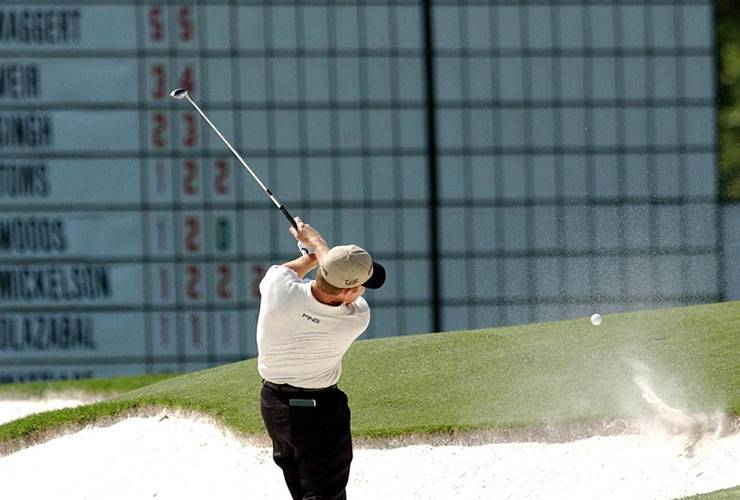
Stan Honda
No one wants to penalise a 14-year-old for anything, let alone tag him with an extra shot for slow play at the Masters. Unfortunately for rules official John Paramor, that was the task he was charged with six years ago. According to a report in Golf World, Paramor had spoken to the amateur from China three times during his round and then gave him one last warning as he walked to the 17th tee. “You must try to play faster,” Paramor said. “This is the last time I can speak to you without penalising you.” Guan asked how long he had to play a shot and when that time began. Paramor informed him that it was 40 seconds and the clock started running when it was his turn to play. On his approach into 17, Guan took 65 seconds, leaving Paramor no choice. Showing class, Guan said he agreed with the penalty, adding: “I respect the decision they make.” The story, fortunately, still had a happy ending. Despite the extra shot, Guan made the cut and got to play the weekend, finishing 58th and as low amateur — eventually.
Rory McIlroy, 18th hole, second round, 2009
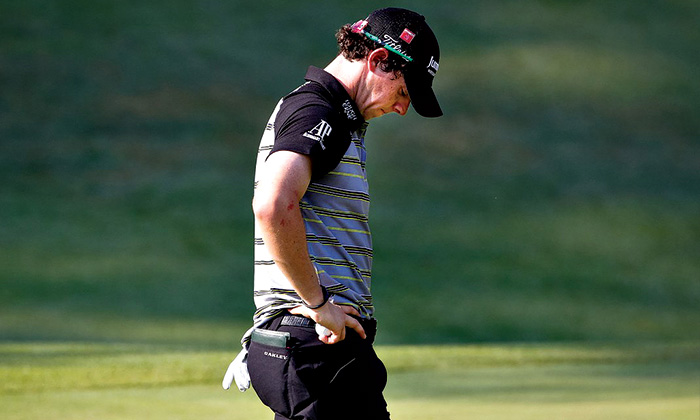
The Masters
Harrington didn’t endure the only rules blunder in 2009’s second round. After leaving a bunker shot in the sand on the par-4 18th hole, McIlroy, depending on your point of view, either smoothed the sand with his foot or kicked it in frustration. The latter would have brought about a disqualification, because McIlroy signed his card shortly thereafter. After being summoned to return to Augusta National later that evening to review the video and provide his side of the story, the club released a statement that said: “Because of the tape and Mr McIlroy’s statement of what had taken place after he played the shot, it was determined that no violation of the rules had occurred.”
Jeff Maggert, third hole, final round, 2003
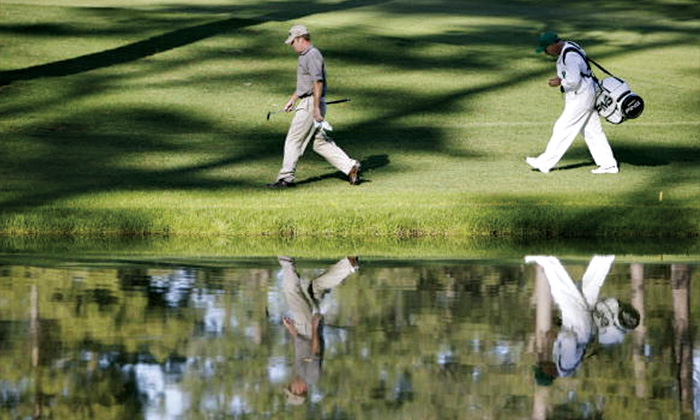
The Masters
Maggert started Sunday with a two-shot lead over Mike Weir and still held a one-shot cushion heading to the 350-yard, par-4 third. Playing cautiously, Maggert attempted to lay up with a 2-iron off the tee, but found one of the four bunkers guarding the left side of the fairway. With his second shot, he attempted to pick a 52-degree gap wedge, but the ball ricocheted off the lip of the bunker and struck him in the chest. It resulted in a two-shot penalty for touching a moving ball, with Maggert eventually making a triple-bogey 7. Although Maggert recovered to play the next eight holes in two-under, a quintuple-bogey 8 on the par-3 12th doused any remaining hope and he finished T-5, five shots back of Weir. “I guess my reflexes aren’t what they used to be,” Maggert said of his inability to avoid the rebound, which interestingly is no longer a penalty under the new Rules of Golf.
Ernie Els, 11th hole, third round, 2004
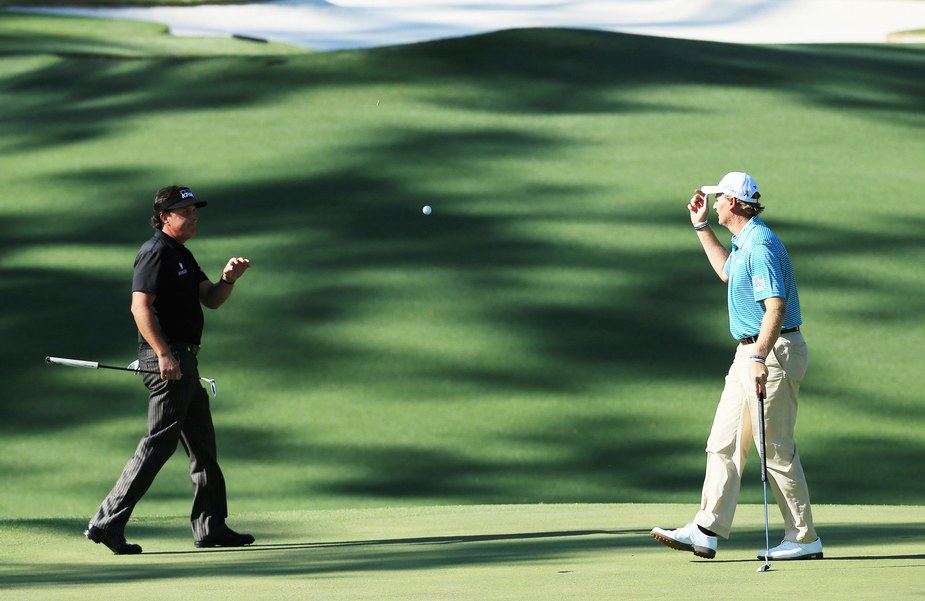
David Cannon
History shows that Els was denied the 2004 Masters (or at least a chance to win it in sudden death) by Phil Mickelson’s walk-off putt on the 72nd hole. But Masters aficionados would say perhaps Els shouldn’t have been in that position to begin with. Rewind to a day earlier on the 11th hole where Els pull-hooked his tee shot some 25 yards off the fairway into a pile of fallen tree branches. Originally denied relief by two officials, Els asked for another opinion. Enter Will Nicholson, the tournament’s competition committee chair. Els contended the rubble amounted to material that had been piled with the purpose of removal, and as such should be ground under repair. Nicholson agreed and Els was granted a drop, sparking a bit of controversy. “I just felt that they could have moved this stuff off-site,” Els said later. “In South Africa we call it ‘greenskeeper’s rubble’, and I felt pretty strongly about that.” Adding to the drama was the fact that before Nicholson arrived on the scene, Els removed some of the limbs and his ball appeared to move, which would have resulted in a penalty. Eventually it was deemed the ball oscillated, but did not move, sparing Els again.
Tiger Woods, 15th hole, second round, 2013

Tiger Woods. Mike Ehrmann
Bearing down on the lead in the 2013 Masters, Woods hit a near-perfect wedge from 85 yards. “Near” being the explanation for it striking the flagstick and ricocheting into the water fronting the green. Wanting to land his next shot a couple yards shorter, Woods went back two yards and dropped. The strategy worked as Woods knocked it stiff and made bogey — except the rules call for the drop to be made as “near as possible” to the spot from which the previous shot was struck. By his own admission in a press interview after the round, he said he dropped two yards back. After a viewer called in (it later was revealed that the caller was former PGA Tour and USGA tournament director David Eger), a series of meetings and discussions eventually resulted in Woods receiving a two-stroke penalty, but avoiding disqualification as the committee controversially invoked Rule 33-7, which gives officials leeway in deciding disqualifications.
Arnold Palmer, 12th hole, final round, 1958
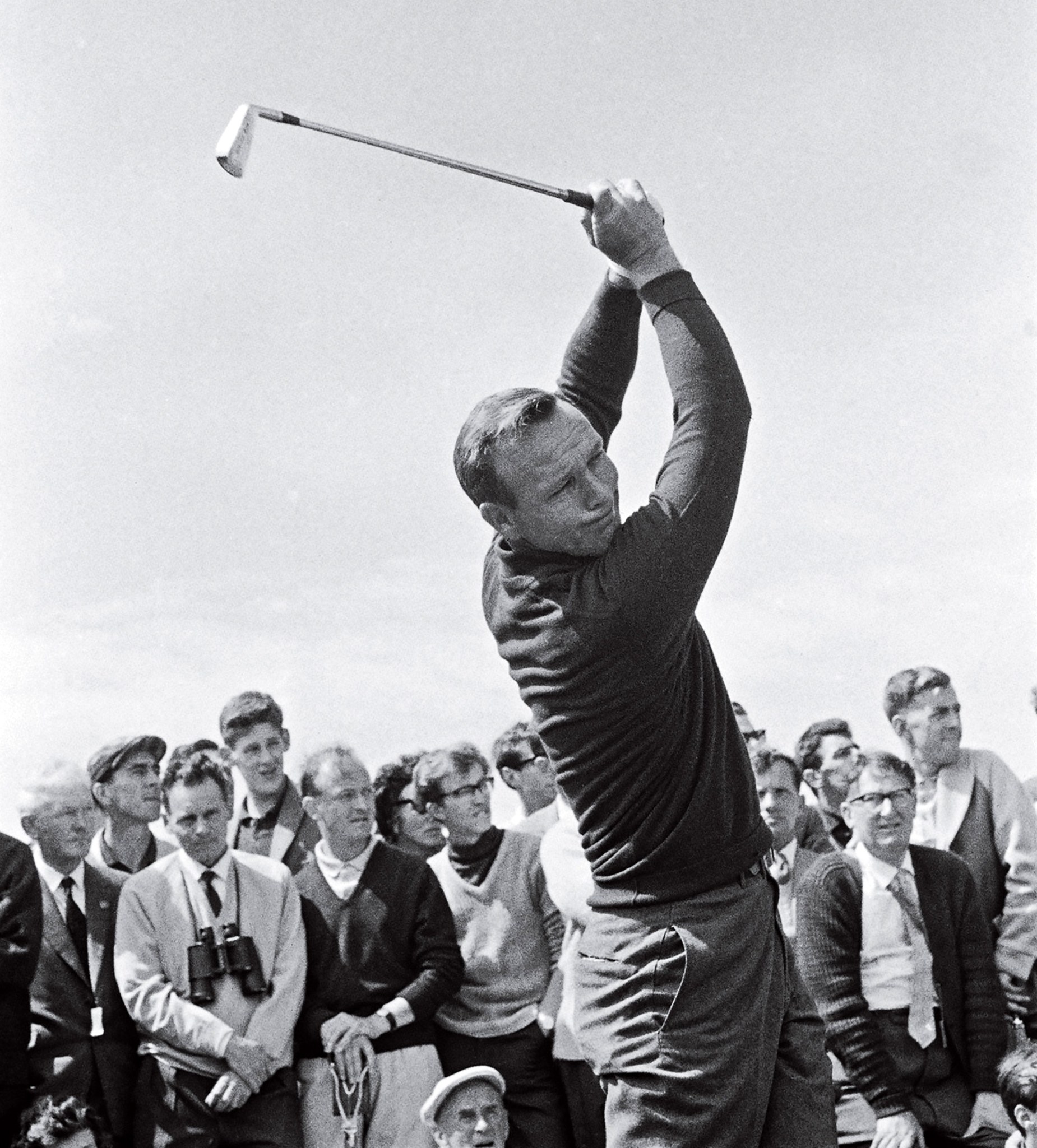
Photo by Bob Thomas/Getty Images
Legions of golfers copied Palmer’s go-for-broke style.
Zeroing in on his first major championship, Palmer led Ken Venturi by one shot playing the par-3 12th. Palmer’s tee shot landed over the green and plugged. Under a local rule providing for relief from embedded balls, Palmer felt he was entitled to relief and Venturi agreed. However, Arthur Lacey a rules official who had played on a pair of Great Britain & Ireland Ryder Cup teams in the 1930s, thought otherwise and told Palmer to play it as it lay. Palmer disputed the ruling, then angrily chopped the ball out, eventually making a double-bogey 5. However after holing out, he announced he was going to play another ball and let the committee rule on it. He did so, making a 3 with the second ball. Venturi contended Palmer played the second ball incorrectly — that it needed to be done concurrently. At the 15th hole, the ruling came down that Palmer’s 3 would stand, and he went on to win by a stroke over Fred Hawkins and Doug Ford. Venturi finished two back. Years later Palmer said he had told Lacey he was going to play a second ball, but Lacey wouldn’t let him do that. The wording of the rule in 1958 wasn’t quite as it is today, either, leaving some wiggle room. “Should the competitor fail to announce in advance his procedure or selection, the score with the second ball shall be his score if played in accordance with the rules,” it read. Venturi went on to have a Hall of Fame career, but never did win the Masters, or get over the incident.
Roberto De Vicenzo, 17th hole, final round, 1968
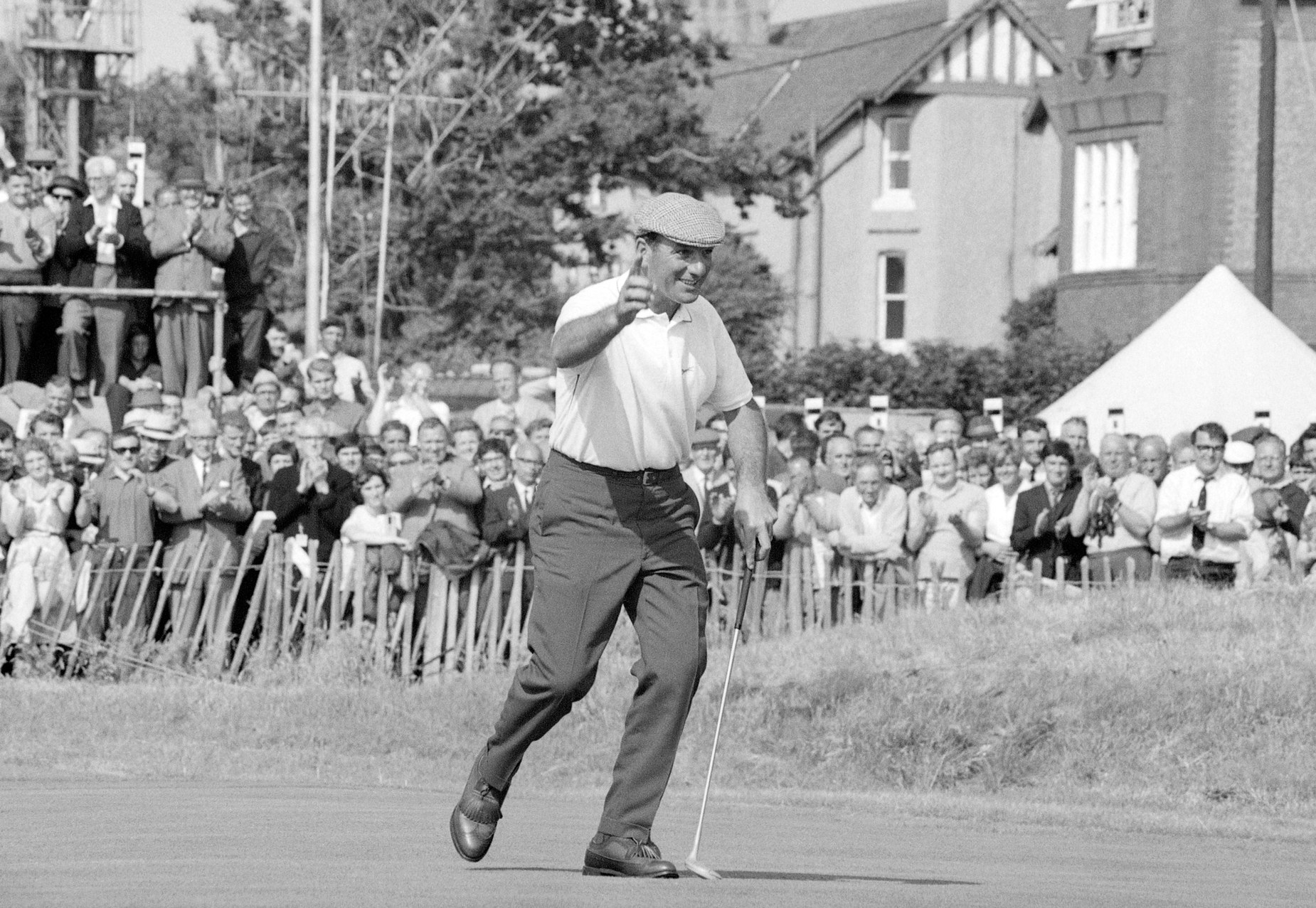
R&A Championships
A final-round scoring oversight in 1968 overshadowed one of the greatest duels in Masters history. On his 45th birthday, De Vicenzo eagled the first hole, turned in 31 and, even with a bogey on 18, appeared to have fired a 65. In the following group, Bob Goalby, who began the day a stroke ahead of De Vicenzo, birdied 13 and 14, then eagled 15 en route to a 66 and an apparent tie. But playing companion and marker Tommy Aaron put down a 4 for De Vicenzo for the 17th hole when the Argentine actually made 3. And when De Vicenzo signed the scorecard, under the Rules of Golf, the higher score stood, Goalby put on the Green Jacket and De Vicenzo was left to utter: “What a stupid I am” regarding his gaffe.









